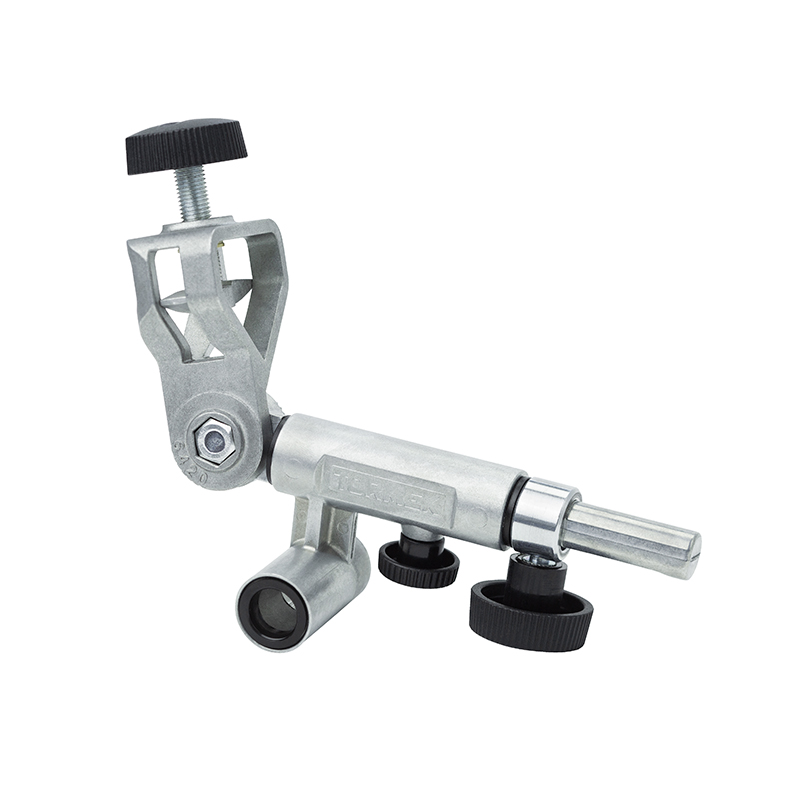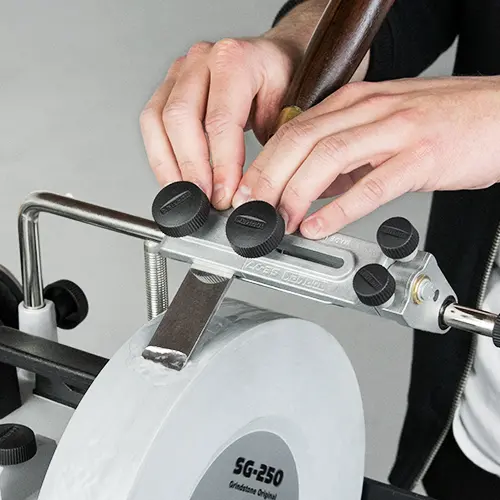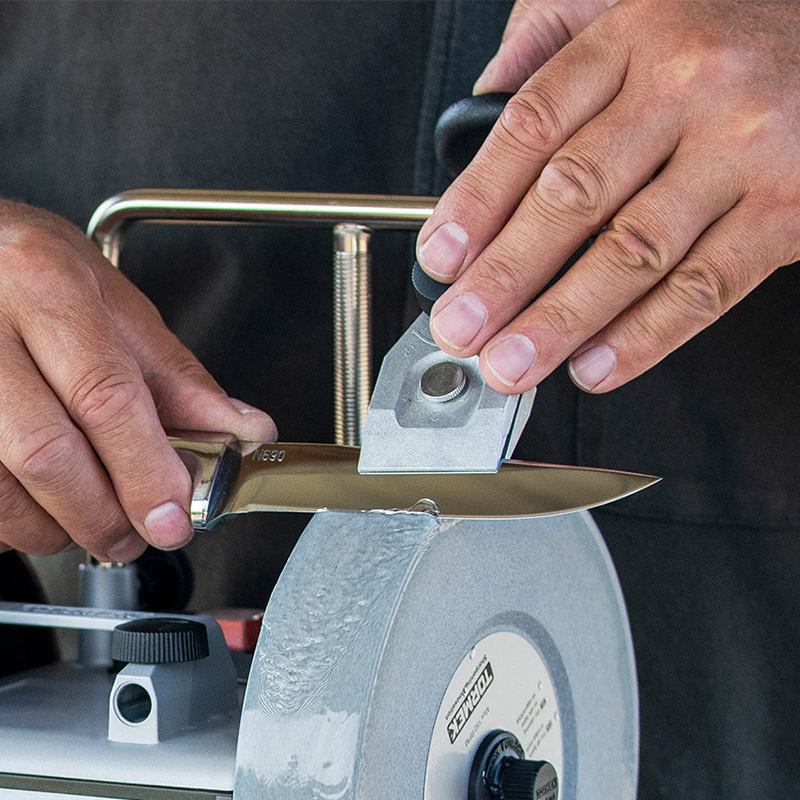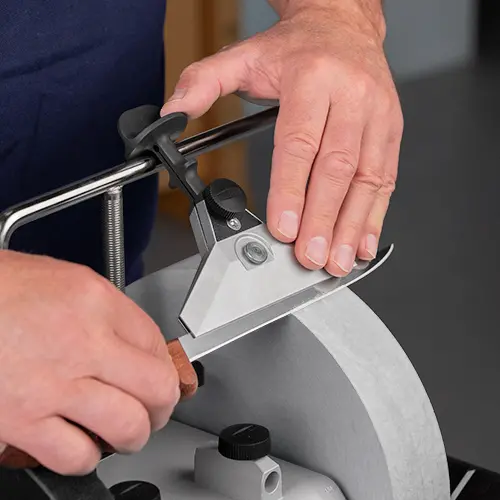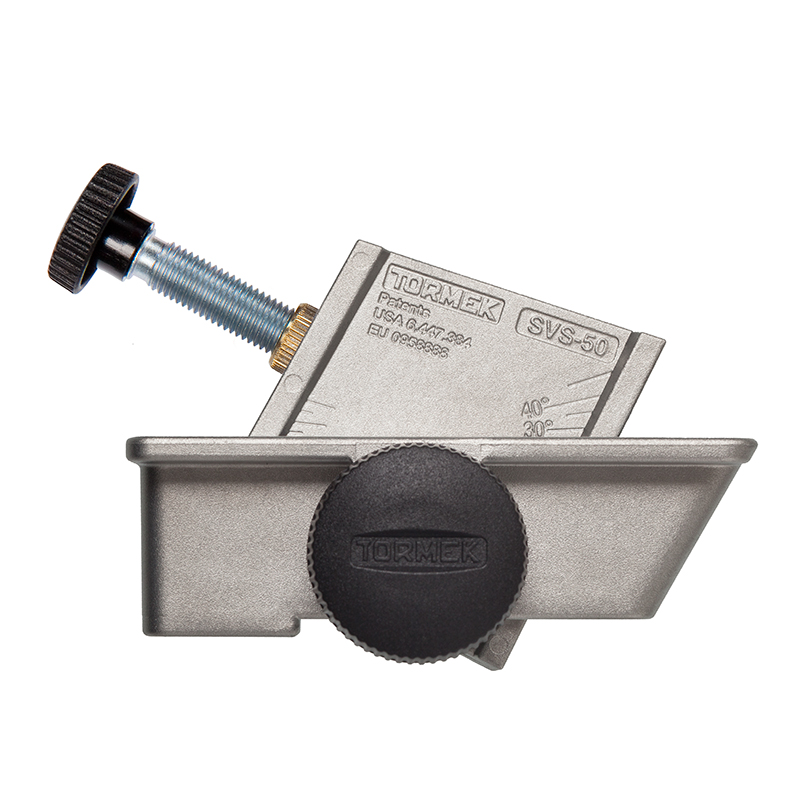
Woodturning Tools
Sharpen your woodturning tools
- Knowledge
- How to Sharpen Your Tools
- Woodturning Tools
Start with sharp tools
If you are a woodturner and have not yet discovered Tormek, there is a big chance you will be surprised to see how big a difference a really well sharpened edge can do to your final result at the lathe. As you know, the sense of control and flow at the lathe starts with sharp tools.
- Sharper woodturning tools gives better results, faster.
- Smart jigs and accessories makes sharpening incredibly fast and easy, even for tools with a complex geometry and unusual profiles.
- Water-cooled sharpening at low rpm never damage your edge.
- Shaping and sharpening on a bench grinder is possible with the extensive Tormek jig system, but heat development risks damaging your tools if you're not careful.
- Sharpening vs shaping: When sharpening a tool you just touch up the edge of an existing shape to renew the sharpness.
- Sharpening vs shaping: When shaping a tool, you remove steel to get your desired shape and edge angle. You can do both shaping and sharpening on your Tormek.
- Simple honing on the inside of arched edges, such as the edge of a bowl gouge
- Unbeatable result, appreciated by professionals worldwide.
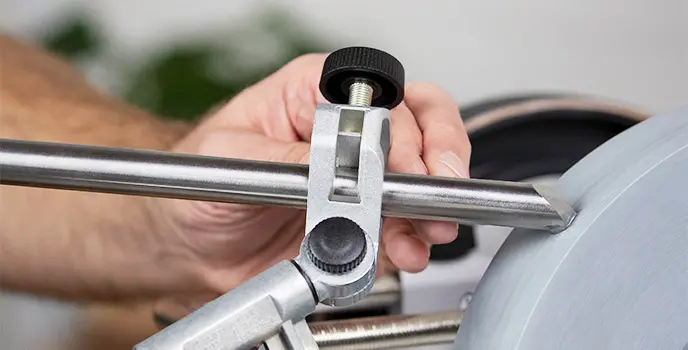
Sharpening woodturning tools on your Tormek - instruction video with Glenn Lucas
Glenn Lucas is one of the greatest woodturners in the world. He has been using the Tormek water-cooled sharpening system for many years. He even teaches sharpening during his courses External link, opens in new window. at his study centre in Carlow, Ireland. In this instructional video he demonstrate how you sharpen your woodturning tools on your Tormek.
External link, opens in new window. at his study centre in Carlow, Ireland. In this instructional video he demonstrate how you sharpen your woodturning tools on your Tormek.
Reshape a gouge with Nick Agar
Our American friend Nick Agar External link, opens in new window. is, too, one of the greatest in the game and a long time Tormek user. In this video he shows you how to quickly reshape a factory grind gouge on a bench grinder using the BGM-100 Bench Grinder Mounting Set. After reshaping, he give the tool its final sharpness on his Tormek.
External link, opens in new window. is, too, one of the greatest in the game and a long time Tormek user. In this video he shows you how to quickly reshape a factory grind gouge on a bench grinder using the BGM-100 Bench Grinder Mounting Set. After reshaping, he give the tool its final sharpness on his Tormek.
Sharpening Class - Woodturning tools
In this episode, Wolfgang and Sébastien from Tormek demonstrate how you sharpen tools for the woodturner; gouges, skews, parting tools, scrapers, cutters and more. We show you the methods for sharpening all these turning tools and how you achieve repeatable edges every time. This class is based on the jigs and accessories included in the TNT-808 Woodturner's Kit, which includes everything you need to sharpen and shape your woodturning tools.
Sharpen Less – Turn More!
The Tormek way of sharpening differs from other grinding methods like high-speed bench grinders and belt sanders. Tormek makes a clear distinction between shaping and sharpening. Once the tool is shaped to the right shape, you remove only a minimal amount of steel when sharpening – you just touch up the edge. An important benefit of the minimal steel removal is that the sharpening is fast, in addition, your precious tools will last much longer.
With the patented TTS-100 Turning Tool Setter every aspect of the set-up is simple and you can be sure to get the exact same shape of your tool every time you sharpen, regardless if the you have a grindstone that will get a smaller diameter over the years.
The high level of control in the sharpening process combined with a superior sharp result, have made many new users report that their turning has improved after switching to Tormek sharpening system. Newly sharpened turning gouges and skews can create the most delicate details and leave the cleanest cuts possible with little or no need for sanding.
And, as important, you can be sure that your tool will behave in the exact same, predictable way all the time at the lathe. The fine sharpening surface obtained with the Tormek water cooled grindstone combined with the leather honing wheel makes the edge stay sharp longer. In the end, you will spend less time sharpening and get more time for turning!
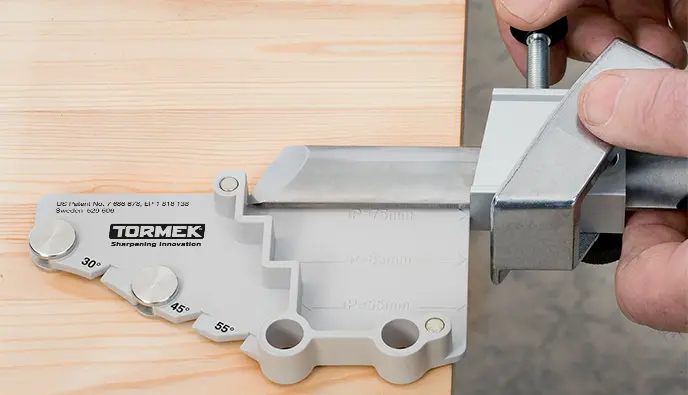
The Difference Between Shaping and Sharpening
When shaping a tool, you remove steel to get your desired shape and edge angle. When sharpening you just touch up the edge of an existing shape to renew the sharpness. The strength of the Tormek method is in the sharpening, which is carried out with an exact replication of both the shape and the edge angle. Since so little steel is removed – you just touch up the edge – the Tormek method is very fast.
If you have a new tool and initially need to change the shape considerably, you can save time by using a high-speed bench grinder together with the BGM-100 Bench Grinder Mounting Set. It makes it possible to use the same Tormek woodturning jigs and settings through the whole sharpening process. Once you have created the desired shape on the bench grinder, keep the tool in the jig and simply shift to the Tormek sharpening machine for the final sharpening and honing. After that, future sharpenings will be an easy job, where you just need to touch up the edge on the Tormek water cooled sharpener.
Shape a Gouge or a Skew on Your Tormek
Shaping a tool with the Tormek machine takes between 10 and 20 minutes depending on the original shape of the tool and on how much steel you need to remove. The extra minutes you might spend on the Tormek is an investment to ensure the best performance of your expensive tool; you can be sure that the edge will not have been softened or cracked due to overheating and that the durability of the sharpness will not be affected. Bear in mind that you normally shape the tool only once.
Tormek-jigs on a Bench Grinder - Why?
The water-cooled Tormek machine is superior in sharpening virtually every edge tool in your shop. However, there is no secret that when it comes to woodturning tools the initial shaping can be done faster on a bench grinder.
We know that some woodturners dedicated to Tormek also have access to a bench grinder and use it for the first rough shaping. It is difficult to control by hand and it is easy to remove more steel than necessary. That's why we want to offer the same precise Tormek jigs through the whole sharpening process.
With the BGM-100 Bench Grinder Mounting Set, you can use the SVD-186 R Gouge Jig, SVS-50 Multi Jig and SVD-110 Tool Rest when shaping tools on your bench grinder. Since the patented TTS-100 Turning Tool Setter works on all grinding wheel diameters, the shape and edge angle is exactly replicated even when you go from a smaller bench grinder wheel to the large Tormek grinding wheels.
There's no more trial and error in getting the right shape on the bench grinder. You can benefit from the fast steel removal on the bench grinder and also get the finest surface on the Tormek water cooled grindstone and the leather honing wheel – all in one jig system.
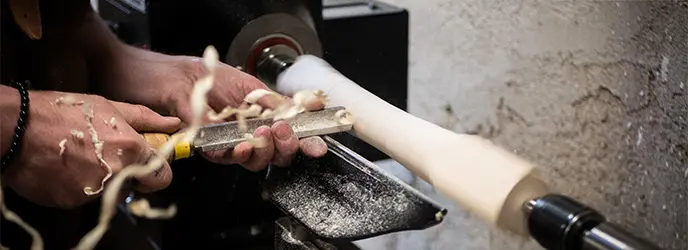
If you do not yet have a Tormek machine you can still benefit from the precise Tormek jig system on your bench grinder and easily get the desired shape and edge angle. Since the Tormek system controls these factors, the tools will behave in exactly the same predictable way all the time at the lathe. The principle for setting the shape and edge angle is the same regardless of which machine you use. If you later choose to add a Tormek to your shop, you will already have the jigs you need for your turning tools.
However, we want to recommend caution when grinding your tools on a bench grinder. It is well known that carbon steel is easily affected when overheated. This is also the case for HSS steel, but the critical temperature is much higher. The very end of the tip, which is very thin, can easily reach a temperature that will affect the tempering.
You can limit the heating up by cooling the tool in water, but then there is a risk of micro cracks, which are invisible to the eye. Even low speed 4-pole bench grinders risks damaging the steel, due to having no water-cooling and still rotating too fast to eliminate overheating in spite of being half of the rpm of a conventional 2-pole grinder.
A few tips when sharpening with a Tormek machine equipped with a grindstone
If you are used to sharpening on a high-speed dry grinding wheel, there are a few things that differ when using a water-cooled grindstone. Here are some simple but useful tips:
- Apply pressure. Don't be afraid to apply pressure on to the stone, it will speed up the sharpening and nothing can happen to damage the tool. The same high grinding pressure on a high-speed grinder will cause overheating. Press with your fingers close to the edge for best control and you can feel where the sharpening will take place. There is no risk to your fingers since the stone runs at 90 rpm.
- Move the tool. Try to use the whole width of the stone by moving the tool sideways, and the stone will wear evenly and without grooves. When moving to a new spot on the stone, lighten the pressure or lift the tool for a smooth transition.
- Grade the stone surface. When shaping a tool with a large bevel surface, the low grinding pressure slows down the grinding. You can speed up the work by re-activating the stone a few times during the sharpening with the SP-650 Stone Grader.


